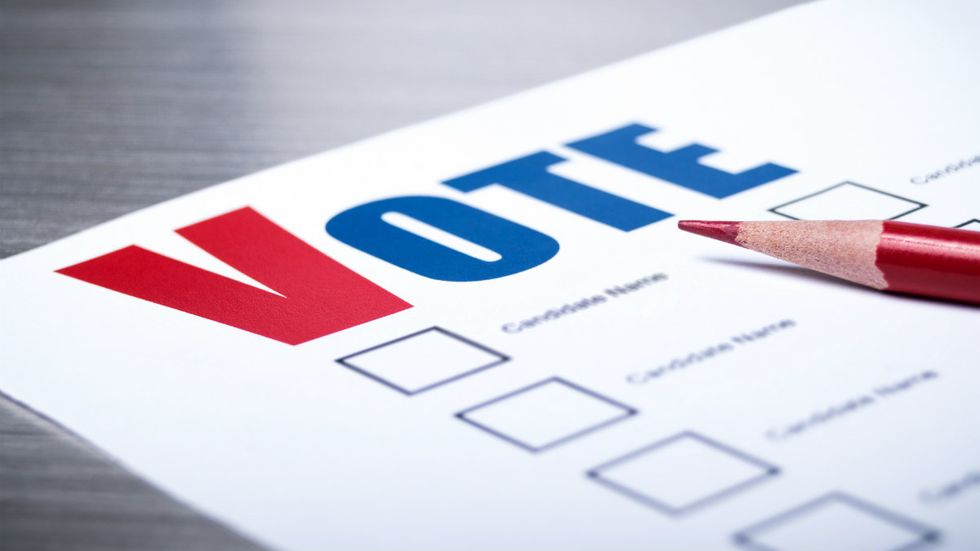
© 2024 Blaze Media LLC. All rights reserved.
A little more than 150 days ago, I wrote this column for Conservative Review, which listed three reasons why I urged our audience not to put too much trust in a year's worth of 2018 election analysis. With a little less than 150 days to go until the 2018 election, now's a good time to revisit this piece to see how much of it still applies.
1) The conventional wisdom about what went wrong predicting the 2016 election is itself wrong, which compromises the ability to correctly forecast what will happen in 2018.
It’s hard to take folks seriously who are still repeating the mantra “the polls were wrong in 2016.” The polls weren’t wrong, but were actually more accurate in 2016 than 2012. For example, the Real Clear Politics polling average had Obama winning in 2012 by 0.7 points, but he actually won the 2012 election by 3.9. Four years later, the RCP average predicted Hillary Clinton to win the popular vote by 3.2 points, and she actually won it by 2.1. Most of the key battleground state polls were within the margin of error down the stretch, too. So, no, the polls weren’t wrong in 2016.
Forecasters, those of us who interpret what data like polling means and project the outcome from there, were the ones who were wrong.
We overestimated Clinton’s organizational strength and underestimated how much her negatives would hinder her turnout.
Midyear Update: This remains in effect until the outcome of the 2018 election is decided, because we won't know until then if Trump's surprising victory was an outlier or the opening salvo of a paradigm shift. This November, the voters will ultimately determine for us whether or not to alter our forecast models based on the next point.
2) An unprecedented split between two historical benchmarks makes for an uncertain environment and outcome.
Overall optimism in the country is up. Consumer confidence is soaring. The economy is growing. Taxes are coming down. The job market is booming. The stock market is bulls on parade. Every key economic indicator that usually drives voters to the polls will be in the Republicans’ favor. By opposing President Trump on everything, Democrats risk allowing the GOP to claim and be given total credit for it.
However, every historical precedent pertaining to presidential approval ratings is in the Democrats’ favor. Furthermore, Trump’s numbers are so bad the pro-GOP Washington Examiner just ran a headline noting Trump’s approval “spikes to six-month high.”
It was a paltry 39 percent.
When favorable media is bragging about a 39 percent approval rating, that gives you an indication why Democrats are so confident. Yet there again, doubt remains.
To capitalize on anti-Obama sentiment leading up to the 2010 midterms, Republicans had already won “road game” elections in Virginia, New Jersey, and Massachusetts. But this go-around, Democrats only have one road win. That was in Alabama against an embattled, scandal-ridden candidate, whom the Republican establishment and much of the conservative blogosphere actively helped the Democrats to defeat as well. True, Democrats are flipping state legislative seats at an alarming rate if you’re a Republican, but why hasn’t that translated to more wins in higher-turnout contests thus far?
Because the same surveys giving President Trump low approval ratings also show voters like the direction the country is heading.
We’ve simply never seen a disconnect like this, with voters seemingly not giving credit to the president presiding over their renewed optimism. Which means the inverse is also true. We’ve never seen a president whose policies were this popular this personally unpopular.
Midyear Update:While the stock market has had a few hiccups, the rest of this rosy January economic outlook looks even rosier in June. The president's approval rating is also up to 44 percent, which is about what Reagan and Obama had at this point in those presidencies, too. However, it should also be noted that both lost their first midterm elections. Reagan lost 27 House seats, while Obama lost a whopping 63. Furthermore, Democrats are still doing well flipping state legislative seats, including a recent one in Missouri, which Trump won by 19 points in 2016.
As I said on Fox News last week, presidents like Reagan and Obama usually lose their first midterm elections because the economic recovery is slow, leading to their unpopularity. But in Trump's case, we have a robust economic recovery, yet his overall unpopularity remains. There's simply no way to calculate the outcome of this unprecedented disconnect until the voters decide for themselves come November.
3) The environment favors Democrats, but the election map favors Republicans.
There’s no doubt Democrats have the energy advantage, which typically shapes campaign environments, and midterm elections are typically turn-out-the-base exercises. However, standing guard over the forthcoming “blue wave” is a moat called the 2018 election map.
One respected analysis came to this stunning conclusion: the Democrats could impressively win every race in places Clinton either won in 2016 or that Trump won by three points or less, and still come up five seats short in the U.S. Senate while losing the House of Representatives once more.
Midyear Update: The University of Virginia's Center for Politics published the following analysis in its "Crystal Ball" on Memorial Day weekend: "Both Democrats and Republicans have about equal odds of winning the House majority...Republicans remain clearly favored in the battle for Senate control." In other words, exactly what I wrote back in January remains true in June.
So what does it all mean?
t's as simple as this -- whoever's dumbest last loses.
Learn it. Embrace it. Repeat it.
Don't miss a minute of Steve Deace on CRTV! Sign up for your FREE 30-day trial today!
Want to leave a tip?
We answer to you. Help keep our content free of advertisers and big tech censorship by leaving a tip today.
Want to join the conversation?
Already a subscriber?
BlazeTV Host
Steve Deace is the host of the “Steve Deace Show” and a columnist for Blaze News.
SteveDeaceShow
more stories
Sign up for the Blaze newsletter
By signing up, you agree to our Privacy Policy and Terms of Use, and agree to receive content that may sometimes include advertisements. You may opt out at any time.
© 2024 Blaze Media LLC. All rights reserved.
Get the stories that matter most delivered directly to your inbox.
By signing up, you agree to our Privacy Policy and Terms of Use, and agree to receive content that may sometimes include advertisements. You may opt out at any time.



